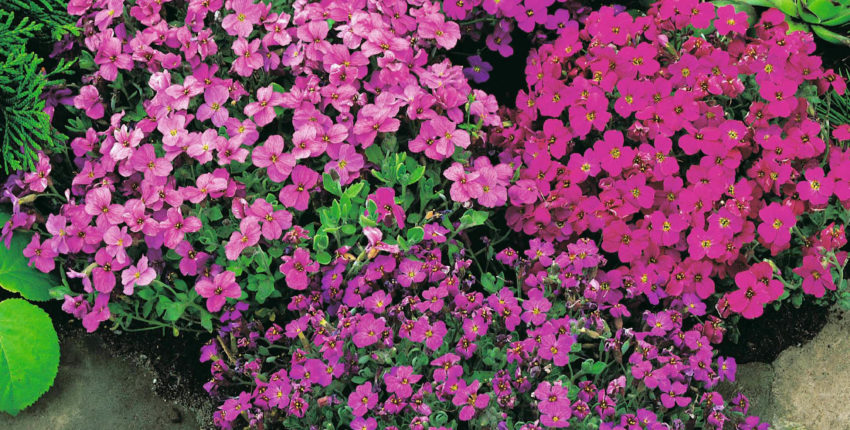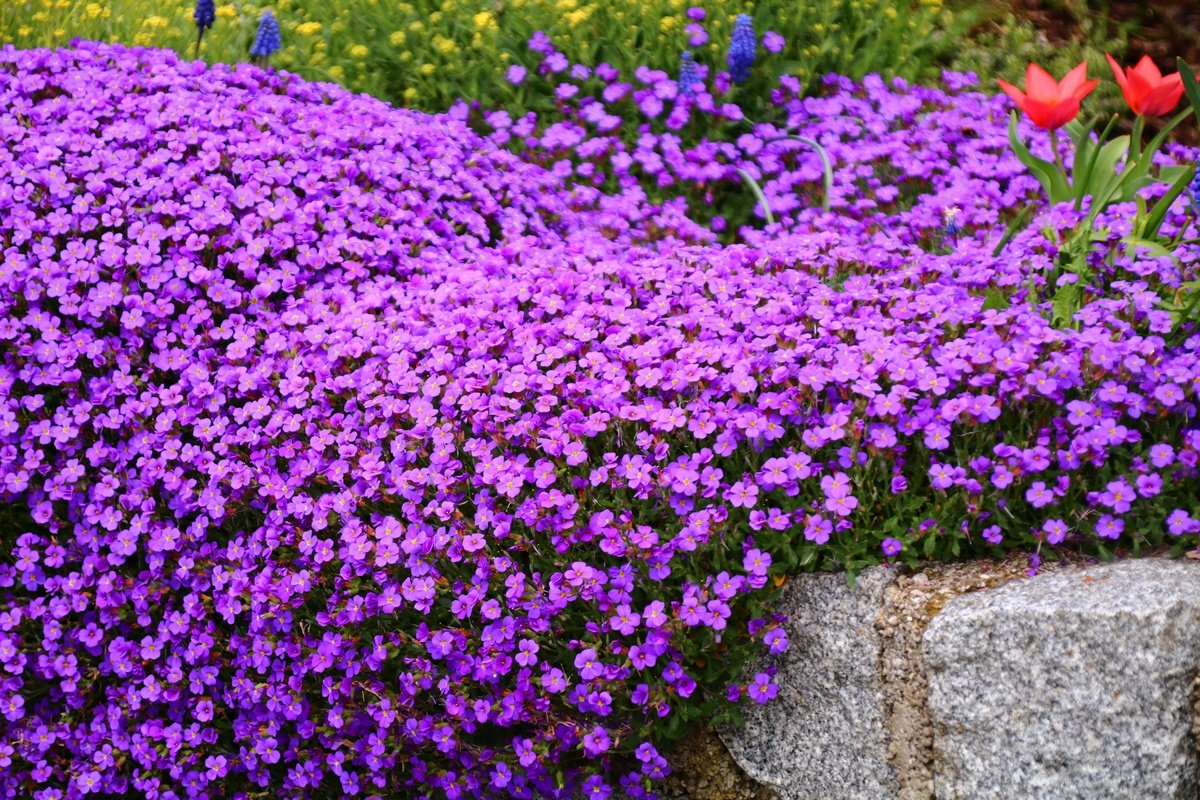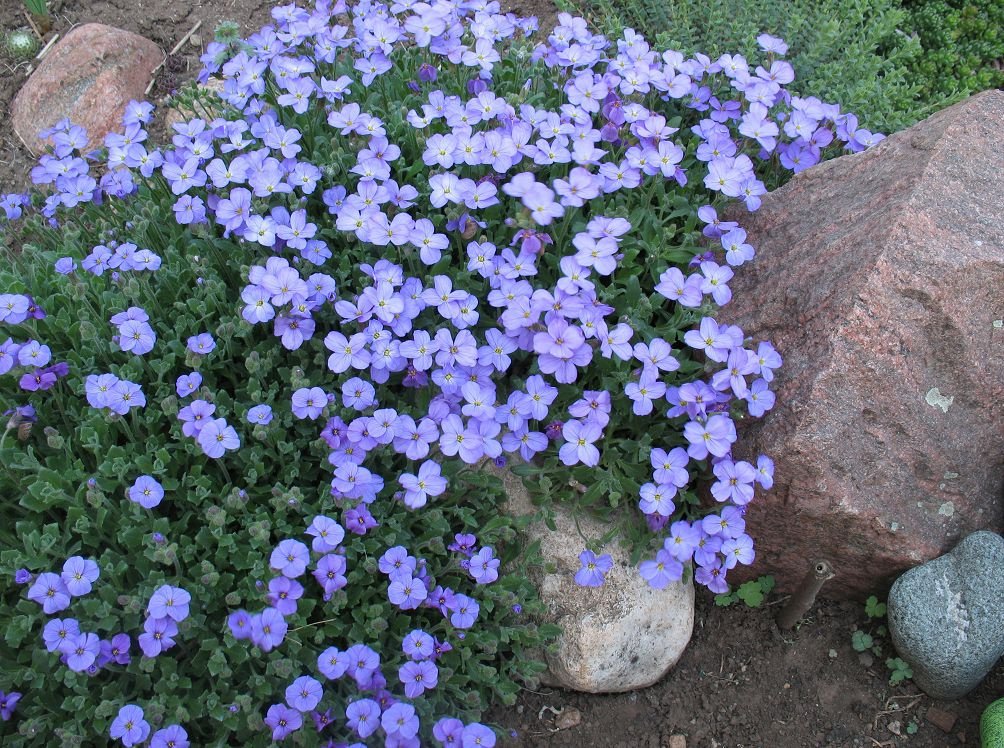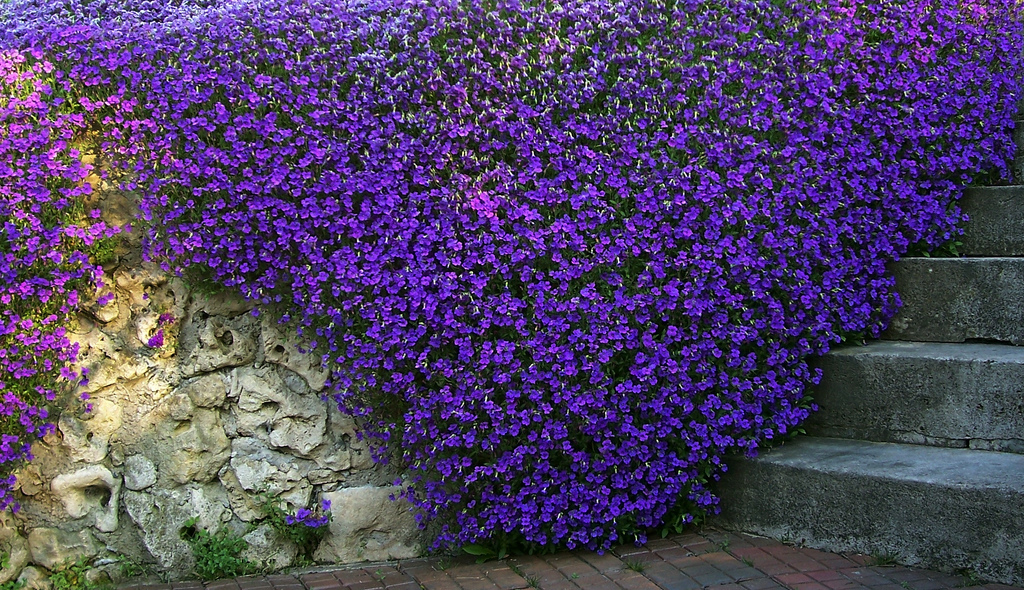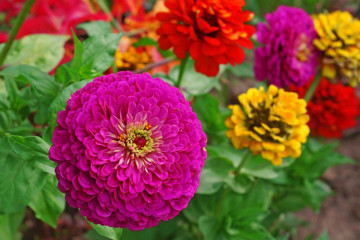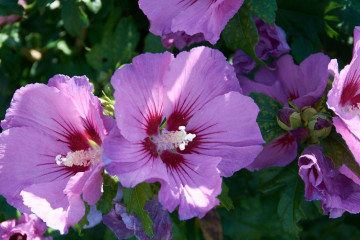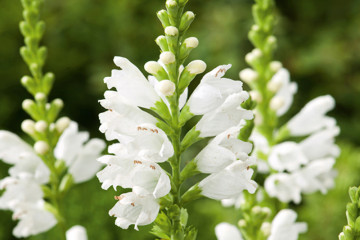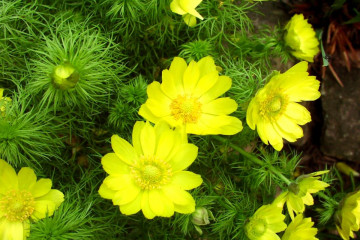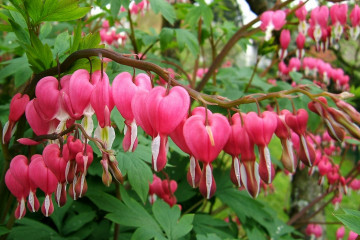Aubriet flower - outdoor cultivation
Content:
Aubrieta, also known as aubretia, is a plant belonging to the Cabbage family. It differs from many garden flowers in that it remains green all year round. In spring and summer, aubretia transforms any area with colorful blooms.
Varieties and types of aubrietta flower
Aubrieta is an evergreen plant, which is a low-growing shrub. From the outside, it looks like a carpet covers the garden area. The leaves have different shapes, resembling a lancet or ellipse. Their color is usually gray-green. The flowers are small, consist of four petals, and do not exceed 1 cm in diameter. They can be ordinary, double or semi-double, differ in shades.
Among the many varieties and types of plants, the most popular are distinguished:
- Deltoid shaving. Blue or purple flowers appear in May and delight the eye of gardeners for a month. It is the most common type of plant, which laid the foundation for almost all existing varieties. Due to the color of the flowers, it is known as the "lilac bush". The leaves are deltoid and have denticles at the edges, usually one or two. The shrub itself grows in height by no more than 15 cm.
- Hybrid or cultural. It blooms in spring, as if welcoming the appearance of sunny and warm days. Hybrid plants include artificially bred plants. Their flowers have a variety of shades, can be red, white, violet, pink, purple. For example, the Audrey variety has several forms, there are buds of raspberry color or dark purple. Flowers grow so densely, resembling soaring clouds, the names Giant Waterfall, Cote d'Azur speak for themselves. Some varieties have two-tone foliage.
- Graying shaved. Its leaves are distinguished by a silvery color, the flowers are usually light lilac.
- Aubrieta Columnar. Its stems are dense, thick, fluffy pile is visible on the leaves. The flowers are also quite large, differing from other varieties and species. They are usually pink or red.
- Aubrieta Campbell has large lilac flowers in various shades. They appear in May and last for more than a month.
Planting a plant
You need seeds to plant aubriets. They are either immediately placed in the ground, or in special containers, waiting for the seedlings to appear. In the latter case, young shoots grow at home. They are gaining strength before landing in open ground. The main thing is to use suitable soil for sowing.
Seed planting
When growing aubretia from seeds, they are planted when the night frosts will definitely not return. This is usually May. You can also start the procedure in September.
In order for the aubriet to bloom in the garden next year, cultivation from seeds must be carried out based on the recommendations:
- Process the seeds with potassium permanganate, which will disinfect them. Then leave them in a growth stimulator for 10-12 hours.
- Prepare a landing site by digging up and loosening the ground. If there is a lot of clay, add sand. Get rid of stones so that the soil is homogeneous.
- Water the ground and make grooves, leaving 15 cm between them.
- Lay out the seeds, cover with sand and moisten the soil.
- Cover with foil until shoots appear. This usually happens after 2-3 weeks.
Planting seedlings
Perennial aubriet is planted for seedlings in February. Seeds must be pre-treated with a solution of potassium permanganate. It is an excellent antiseptic that gets rid of bacteria and fungi.
Evergreen Aubrietta, how to grow from seeds, step by step instructions:
- Prepare separate containers. It is better not to use seedling boxes, so as not to injure the roots of the plant in the future. They are fragile and try to avoid any manipulation with them.
- Fill the container with soil by mixing the garden soil with sand in equal proportions.
- Add seeds, sprinkle with sand and moisten a little.
- Cover with plastic wrap and remove to a warm place. The temperature for home keeping should not fall below +18 ℃.
- Ventilate and moisten the seedlings daily when the soil dries up.
- Transplant outdoors in May, when the weather is consistently warm. Loosen and moisten the soil in advance. In order for young plants to be easily removed from containers, you need to put them in warm water for a while. So the earthen lump will more easily move away from the walls and you will not have to injure the root system.
Correct planting of the Aubriets is the key to its growth and abundant flowering. You need to sow in a suitable soil and do not forget about the rules of moisture.
Watering and loosening the soil
Watering the plant should be moderate. It is imperative to monitor whether the soil is dry. Otherwise, the roots will rot and die.
The soil needs to be periodically loosened, while adding sand to the top layer of the soil. You also need to get rid of weeds. Their growth has a detrimental effect on the development of obriety.
Reproduction methods
Most often, Aubriet is propagated by seeds or cuttings. The division of the bush is rarely chosen, the roots of the plant are so fragile that you should not touch them again.
Cuttings usually remain after regular pruning of the shrub. Shoots without flowers are placed in a mixture of sand and peat. It is necessary to create greenhouse conditions for them, and after rooting, transfer them to open ground. Usually, a transplant is planned for late summer or early fall.
Top dressing and fertilizers
Fertilizers need to be applied when the plants have already grown, before the beginning of the flowering period. It is also recommended to feed after pruning. Young flowers will not be damaged only by nitrogen-containing preparations. They help build green mass.
Much depends on the condition of the soil and its characteristics:
- If it is nutritious, then feeding is rarely carried out, 1-2 times a month is enough. Most of all, the plant is helped by mineral fertilizers and mixtures containing potassium. You can buy special complexes designed for flowering garden plants.
- When the flower grows among the stones, you need to shorten the interval between treatments. In this case, when planting, the seeds are simply poured between the crevices of the cobblestones.
Experienced gardeners recommend adding wood ash to the soil, and manure is considered detrimental to the shrub. He is able to burn the roots of the plant and lead to his death.
Plant transplant
Aubrieta is an unpretentious plant and it is not burdensome to care for it, but she perceives the transplant extremely painfully. Often, after the procedure, the shrub dies. Therefore, before growing Aubriett, you need to determine a place for it in advance, so that later the plant does not have to be disturbed. Even the most experienced gardeners fail to keep a garden beauty alive. The procedure itself is carried out according to the usual rules, the bush is dug up and transferred to a new hole. The soil is moistened before planting, and after the flower is in place, sand is poured at the roots.
Pruning Aubrietta
Pruning should be done several times a year. Be sure to do it after the first flowering, then by autumn the buds will be tied up again. It is necessary to remove the stems of the shrub almost at the very base, this is what will allow the plant to bloom annually.
In the spring, before the growth period, you need to carefully examine the shrub, removing damaged and dried parts.
Pests and diseases
Planting and caring for a perennial shaved does not require much time, because a flowering shrub cannot be called capricious. Another plus of its cultivation is the rare damage from diseases and pests.
Sometimes the flower becomes infected with powdery mildew. A whitish bloom appears on the leaves and flowers under the influence of the fungus. After some time, it acquires a brown tint. As a result, the affected areas turn black, rot, and die. The shrub no longer looks attractive; dry, ugly leaves and stems appear on the flowering carpet. In addition, an infected plant will most likely not survive the winter. The disease can be stopped, stopped spreading. Treatment with a solution of colloidal sulfur will help.
Inconvenience is caused by aphids, insects, sucking juice from the plant. It not only deprives it of nutrients, but also carries viral diseases. The shrub must be treated with special agents, for example, "korbaphos".
Flowering period
Aubrieta usually blooms from spring. The colorful period lasts for a month. Depending on the type of evergreen shrub, flowering begins in mid-spring or closer to summer. Sometimes it happens again, closer to autumn.
During flowering, it is important to maintain moisture at the roots of the plant. For this, the soil around the obriety is sprinkled with sand. Abundant flowering is excluded if the soil is excessively moistened. The shrub needs a lot of liquid only in dry periods. The rest of the time there is usually enough rainfall.
At the end of the flowering period, a fruit is formed. It is a pod, and the seeds are oblong.
Preparing for winter
Aubrieta is a perennial plant, you do not need to dig it out. It tolerates winter well, but severe frosts can destroy the shrub, so it is better to protect it.
Be sure to cover the seeds and young shoots planted in the fall. Will save shaved from death:
- mulching with a mixture of sand and peat;
- dry leaves or spruce branches.
If the winter is snowy, then the bush will not suffer. In dry frosty weather, there is a risk that he will die, so it is better to play it safe. Leaves do not need to be removed before wintering.
Use in landscape design
Aubrieta as a soil flower does not combine well with other garden plants. Low bushes look good in single plantings. They fill the territory, resembling a fluffy carpet or a colorful sea. Usually they are used in the design of garden and park areas for the design of alpine slides.
An attractive plant is planted along the paths, creating floral borders that divide the space. For such purposes, an obrietta cascade of seeds is ideal, planting and caring for which is no different from other species. There are different varieties with different colors, for example, Blue Shade, Cascade Red. The main thing is to place the flower in a sunny or slightly shaded place. Otherwise, it will lose its attractiveness, the petals will not be so bright.
It must be remembered that cascading aubriet blooms a little later than other species. She loves moderate humidity, but is unpretentious to the acidity of the soil. You can place the plant on the fence, going down, it will resemble streams of water, creating a bright waterfall.
In nature, Aubriet often grows near river banks and on rocks, so the shrub will feel great in rocky terrain.
Aubrieta is an evergreen perennial. It has abundant flowering and is easy to breed. It is a pleasure to look after him. As a reward for observing the simple rules of gardeners in the spring, and, possibly, in the fall, a bright blooming carpet awaits. Aubrieta is difficult to replace in landscape design. The shrub is as if created for the alpine slides, because it comfortably exists even among the stones.
